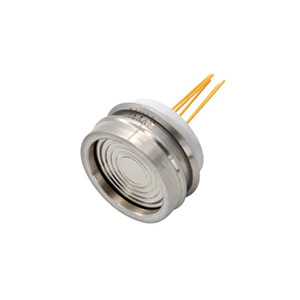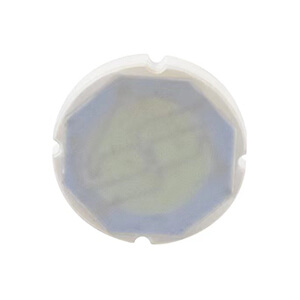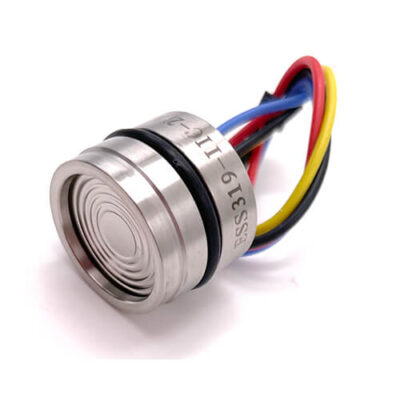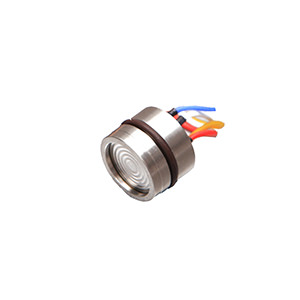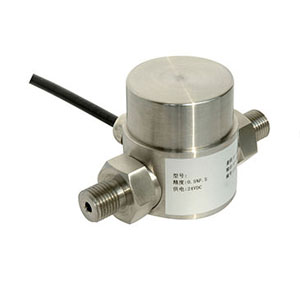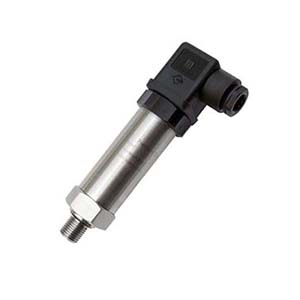CGAs city population density boosts, more giant constructions are becoming significantly commonplace, and managing their internal environment precisely is a task for operations and designers’ personnel alike.
On the other hand, due to ever-increasing environmental protection policies, people must utilize limited resources to construct more energy-efficient buildings, such as controlling heat and supplying water effectively and precisely.
Building automation business incorporates heating, ventilation, cooling, and refrigeration (HVACR), with control interfaces and keeping an eye on systems– all by using pressure sensors.
HVACR includes complicated control algorithms that run utilizing feedback acquired throughout the system from various sensors – inspecting temperatures around the building, pipework, and total air circulation.
Pressure sensors play a critical role in monitoring air filters in HVAC systems. They help ensure good air quality and design efficiency by detecting when the air filters become clogged or dirty, which can affect the performance of the HVAC system, please read more abut the Guide to Choose Pressure Sensor for HAVC system.
Here’s how pressure sensors work and benefit HVAC system:
1, They are monitoring Air Filters.
The air filter is essential for any HVAC system and requires running effectively. In case of that, a differential pressure sensor can be calibrated to measure pressure variants at both sides of filters, then transfer the output signal to the display device at all times; data flow can help supervisors make a decision correctly.
Differential pressure measurement:
Pressure sensors are used to measure the differential pressure across the air filter. This involves measuring the air pressure before and after the filter and then comparing the difference between the two values. As the filter becomes dirty or clogged, the pressure drop across it will increase.
Detecting a clogged or dirty filter:
When the differential pressure across the filter reaches a certain threshold, it indicates that the filter is clogged or dirty and needs to be replaced or cleaned. This threshold value is typically predetermined based on the filter’s specifications and the HVAC system’s requirements.
Maintaining air quality and system efficiency:
Monitoring the differential pressure across the air filter helps maintain optimal air quality and system efficiency. A clogged or dirty filter can reduce airflow, causing the HVAC system to work harder and consume more energy. By detecting a dirty filter, the pressure sensor allows for timely filter maintenance or replacement, ensuring the HVAC system operates efficiently and maintains good air quality.
Integration with HVAC control systems:
Pressure sensors can be integrated with the HVAC system’s control panel, which can then alert building maintenance personnel or automatically trigger a maintenance request when the filter needs to be replaced or cleaned.
2, Reducing Fan Power Use.
The flow of air in an HVAC system requires to be kept within particular specifications to preserve a clean and safe living or workplace. Fans need the air through ducts to keep it distributed.
The differential pressure sensor has been deployed correctly to monitor data variation of airflow, accordingly to the on-time data delivered by the pressure sensor; the system then can make control fans’ speed, and using that, minimum energy consumption can be calculated.
Pressure sensors can play a significant role in reducing fan power use in HVAC systems by enabling demand-controlled ventilation (DCV) and optimizing fan speed based on the actual airflow requirements.
Monitoring airflow and pressure:
Pressure sensors are installed in strategic locations within the HVAC system, such as ductwork or air handling units, to monitor the air pressure and airflow in real time. This information is then used to assess the current ventilation requirements of the building.
A demand-controlled ventilation (DCV):
DCV is a strategy used in HVAC systems to adjust the ventilation rate based on the actual occupancy and ventilation needs of a building rather than providing constant airflow. Pressure sensors can help implement DCV by providing real-time data on the air pressure and flow, allowing the system to adjust the fan speed accordingly.
Variable-speed fan control:
By using the data provided by pressure sensors, the HVAC system can control the speed of the fans using variable-frequency drives (VFDs) or other speed control mechanisms. When the ventilation demand is low, the fan speed can be reduced, resulting in lower energy consumption.
Maintaining optimal air quality and comfort:
By continuously monitoring the air pressure and flow, pressure sensors can help maintain the desired air quality and comfort levels in a building while still optimizing fan speed and reducing energy consumption.
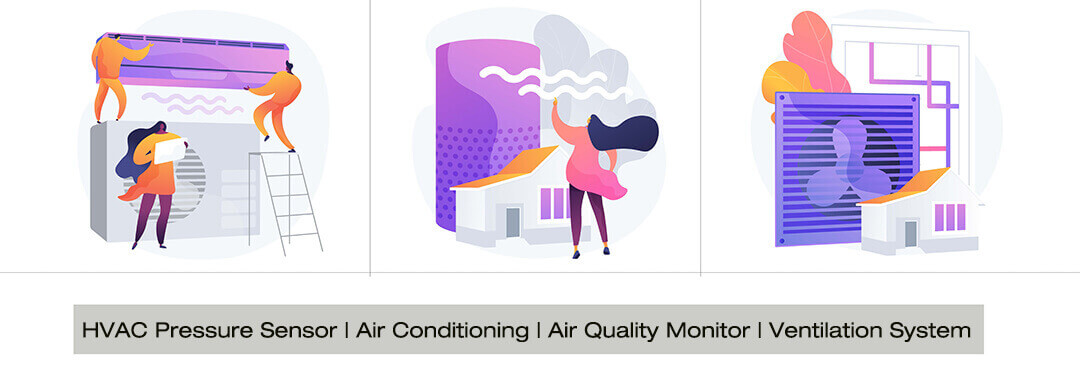
3, Maintaining Relative Duct Pressure Levels.
Differential pressure sensors are likewise utilized to measure the relative pressure distinctions between duct air and room air. Negative air pressure in one part of a building will trigger air currents as the pretty more extensive forces discover their method in the low-pressure locations.
The pressure inside the duct can be measured by a differential pressure sensor, with one side open to ambient air in the room and another side kept in the flue.
Static and dynamic pressure measurement:
Pressure sensors measure the static pressure and dynamic pressure within the ductwork. Static pressure refers to the pressure exerted by the air on the duct walls, while dynamic pressure is associated with the air velocity in the duct. Together, they help determine the total pressure in the duct system.
Balancing air distribution:
By continuously monitoring the pressure levels in various sections of the ductwork, pressure sensors can help identify imbalances in air distribution. This information can be used to adjust dampers, fan speeds, or other system components to ensure that the desired air pressure levels are maintained throughout the duct system, resulting in even air distribution and optimal comfort in the building.
Pressure control strategies:
Pressure sensors can be used to implement various pressure control strategies, such as constant static pressure control, constant total pressure control, or static pressure reset control. These strategies help maintain the desired duct pressure levels, ensuring optimal airflow and energy efficiency.
Variable Air Volume (VAV) systems:
In VAV systems, the air volume supplied to different zones within a building can be adjusted based on the actual heating and cooling requirements. Pressure sensors can help maintain the duct pressure at the required level by monitoring the pressure changes as the VAV dampers open or close, adjusting the fan speed accordingly.
4, Improving Heat Exchange Efficiency.
Constructing control, management, and automation systems can control the temperature and humidity of a room with the help of the feedback their sensors give. Of specific significance are pressure sensors that measure the relative atmospheric pressure in a chamber, which is typically normalized to 1 atmosphere (ATM).
Applying a pressure sensor to keep track of the atmospheric pressure in a room over time can figure out whether there are sealant leakages around windows and doors, which would result in heat (energy) losses.
Additionally, the cooling and heating systems apply pumps to compress fluids for heat exchange, and these have pressure sensors installed on the high side and low side of the compressor to make sure the pressure variation is kept for the best possible performance. The kind of sensor applied here may consist of a differential pressure sensor with a scale of 0 to 25 bar.
Pressure sensors can play an essential role in improving heat exchange efficiency in HVAC systems by monitoring the pressure levels and helping to optimize system operation.
Monitoring pressure in heat exchangers:
Pressure sensors are installed to measure the pressure on both sides of a heat exchanger (e.g., evaporator or condenser coils) in the HVAC system. By monitoring these pressure levels, the sensors can provide valuable information about the performance and efficiency of the heat exchanger.
Detecting pressure drop or rise:
Suppose the pressure sensors detect a significant pressure drop or rise across the heat exchanger. In that case, it may indicate issues such as fouling, blockage, or refrigerant leakage, which can reduce the heat exchange efficiency. By identifying these issues early, necessary maintenance or repairs can be performed to restore the heat exchanger’s efficiency.
Optimizing refrigerant flow:
Pressure sensors can help optimize refrigerant flow in the HVAC system by monitoring the pressure levels and adjusting the expansion valves accordingly. This ensures the correct refrigerant flow rate, which is crucial for the efficient operation of the heat exchanger.
Maintaining proper airflow:
Pressure sensors in the ductwork or air handling units can help ensure proper airflow across the heat exchanger. This is essential for effective heat transfer and maintaining the desired temperature in the building. If the sensors detect inadequate airflow, the HVAC system can adjust fan speeds or dampers to improve airflow and heat exchange efficiency.
5, Monitoring Variable Air Volume in Heating Systems.
Suppose the heating system works with a Variable Air Volume (VAV) configuration (as opposed to a Constant Air Volume or CAV system). In that case, the temperature is kept by differing the air volume instead of temperature.
In this case, differential pressure sensors are applied to measure the volume of air and would be specified with a range of around 0 to 360 Pascals.
Pressure sensors play a crucial role in monitoring variable air volume (VAV) in heating systems within HVAC systems. They help ensure optimal air distribution and energy efficiency by adjusting the air volume based on the actual heating requirements of different zones within a building.
Measuring air pressure in ductwork:
Pressure sensors are installed within the ductwork of the HVAC system to measure the air pressure in real time. This information is used to determine the airflow rate and assess the current heating requirements of the building.
Variable Air Volume (VAV) systems:
VAV systems adjust the air volume supplied to different zones within a building based on the actual heating requirements. This ensures that each zone receives the appropriate amount of heated air, resulting in optimal comfort and energy efficiency.
Pressure sensors in VAV systems:
Pressure sensors help monitor the pressure changes that occur as VAV dampers open or close in response to the heating demand in each zone. By continuously monitoring the pressure levels, pressure sensors can provide valuable information on the airflow rates and help maintain the desired duct pressure.
Adjusting VAV dampers and fan speeds:
Based on the pressure data collected by the sensors, the HVAC system can adjust the position of the VAV dampers and the fan speed to ensure that the correct air volume is supplied to each zone. This helps maintain optimal comfort levels while minimizing energy consumption.
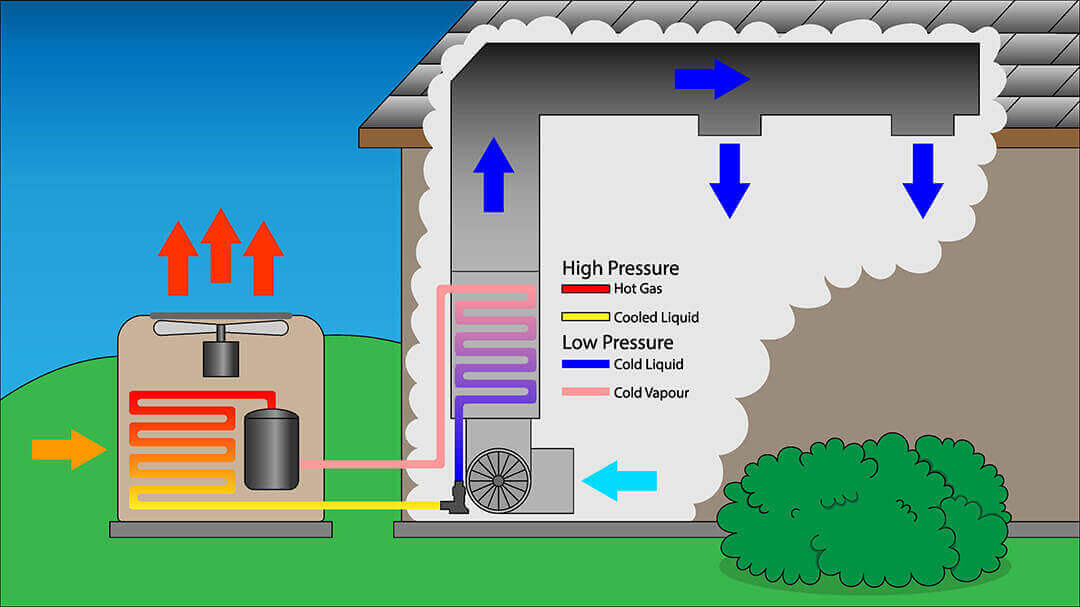
6, Automatic Safety System.
Building management controllers can employ pressure sensors to control aspects of the HVAC system specifically, frequently such as a differential pressure sensor that works as a switch; in this way, when the pressure level is more than the limitation, devices in the system can be turned off automatically, possibly avoiding more extensive damage to the system or abrupt environmental changes within the building.
These pressure sensors will generally be defined to work over a range of 0.1 to 4.00 Inch H2O, and they feature a spring-loaded diaphragm that activates two switches, one to identify over-pressure and one to identify under-pressure. Contacts can be rated as much as 240VAC, with more than 1 million switching operations.
Let dev into below details and find out how it works in an automatic safety system.
Monitoring pressure levels:
Pressure sensors are installed at various points in the HVAC system, such as ductwork, air handling units, and heat exchangers, to monitor the air or refrigerant pressure levels continuously. This information helps identify any abnormal pressure changes that might indicate a potential safety issue.
Detecting potential issues:
Pressure sensors can detect potential issues such as blockages, leaks, or equipment malfunctions by monitoring pressure levels. For example, a sudden drop in air pressure within the ductwork might indicate a blocked air filter, while a rapid increase in refrigerant pressure might signal a refrigerant leak or compressor malfunction.
Automatic safety response:
When pressure sensors detect abnormal pressure levels, they can trigger an automatic safety response, such as shutting down the affected equipment or adjusting system operation to prevent damage or further issues. This helps maintain the safety and reliability of the HVAC system.
Preventative maintenance:
The continuous monitoring of pressure levels by pressure sensors can also help identify the need for preventative maintenance. For example, if the pressure sensors detect a gradual increase in air pressure across an air filter, it may indicate that the filter is becoming dirty and needs to be cleaned or replaced.
7, Keeping Gas Pressure in Pneumatic.
In an HVAC system, gauge pressure can be attained by a relative pressure sensor based on pneumatic or hydraulic operating concepts. These can take the kind of liquids or gases utilized in the heating or cooling procedure and ensure the sub-systems await instant usage if needed.
Pneumatic pressure sensors can work over an extensive range of pressures, as much as 600 bar if essential, and can run while immersed in depths of 100 meters or more.
Monitoring gas pressure:
In pneumatic HVAC systems, pressure sensors are installed to continuously measure the gas pressure levels, typically in the air supply lines. This information helps ensure that the pressure remains within the required range for proper system operation.
Pneumatic controls and actuators:
Pneumatic HVAC systems use compressed air to operate controls and actuators, such as dampers, valves, and thermostats. The pressure sensors provide the necessary data to adjust the gas pressure to maintain accurate control over these components.
Pressure regulation:
Based on the data collected by the pressure sensors, the HVAC system can regulate the gas pressure using pressure regulators or control valves. These components adjust the gas flow to maintain the desired pressure levels, ensuring efficient and safe system operation.
Detecting potential issues:
By identifying abnormal pressure changes, pressure sensors can detect potential issues in the pneumatic HVAC system, such as leaks, blockages, or equipment malfunctions. Early detection of these issues allows for timely maintenance or repairs, minimizing downtime and ensuring safe operation
8, Tracking Dangerous Chemicals.
Ammonia is chosen as a coolant in HVAC and refrigeration systems; however, it might trigger substantial damage and risk to individuals in case of a leakage. Relative pressure sensors can be employed to keep track of the pressure of the ammonia as it passes through the system, guaranteeing it remains within appropriate limitations.
Likewise, the differential pressure sensor can also be able to measure low and high pressure at two sides from 41kpa to 1200kpa.
Building control, monitoring, and automation systems harness the power and advantages of HVAC devices, which consequently rely greatly on pressure sensors to work effectively.
Here is how it tracks dangerous chemicals.
Monitoring pressure levels:
Pressure sensors are installed at various points in the HVAC system, such as ductwork, air handling units, and exhaust systems, to monitor the air pressure levels continuously. This information helps identify any abnormal pressure changes that indicate a leak or the presence of dangerous chemicals.
Detecting potential leaks:
If pressure sensors detect an unusual pressure drop or rise in the system, it may indicate a potential leak of dangerous chemicals or gases, such as refrigerants or combustion byproducts. Early detection of these leaks allows for timely maintenance or repairs, minimizing the risk of exposure to harmful substances.
Integration with air quality sensors:
While pressure sensors can help detect potential leaks, they cannot directly identify the type or concentration of dangerous chemicals. However, they can be integrated with air quality sensors, such as gas detectors or volatile organic compound (VOC) sensors, to provide a more comprehensive monitoring solution. When combined, these sensors can help identify the presence and concentration of harmful substances in the HVAC system.
Triggering safety measures:
When pressure sensors and air quality sensors detect the presence of dangerous chemicals, they can trigger safety measures such as activating alarms, shutting down the affected equipment, or increasing ventilation to dilute the concentration of harmful substances. This helps protect the occupants of the building and minimize the risk of exposure to dangerous chemicals.
Find out Pressure Sensor HVAC in Eastsensor
| Model | EST3110 | EST3110 B | EST3120 |
|---|---|---|---|
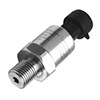 | 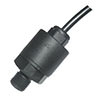 | 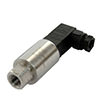 |
|
| Data Sheet | Download | Download | Download |
| Range | 0~5bar…50bar | 0~5bar…50bar | 0~5bar…50bar |
| Accuracy | ±1.0% | ±1.0%,±4.0% | ±0.25%,±0.5%,±1.0% |
| Power Supply | 10~30Vdc | 12~30Vdc | 10~30Vdc,5Vdc |
| Output | 4~20mA,0.5~4.5V | 4~20mA,0.5~4.5V | 4~20mA,0.5~4.5V |
| Electrical Connection | Packard | M12X1/ GX12/16-7 | DIN43650, IP65; GX 16-7 |
| Pressure Connection | G1/4, NPT1/4, 7/16-20UNF | G1/4, NPT1/4, 7/16-20UNF | M20 x 1.5, G1/4, G1/2, NPT1/4, 7/16-20UNF |
| Ingression Protection | IP65 | IP45/ IP65 | IP45/ IP68 |
| Model | EST3122 | EST3135 | EST3123 |
|---|---|---|---|
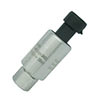 | 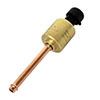 | 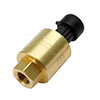 |
|
| Data Sheet | Download | Download | Download |
| Range | 0~5bar…50bar | 0~5bar…50bar | 0~5bar…50bar |
| Accuracy | ±0.5% | ±1.0%,±2.0% | ±0.5%,±1.0% |
| Power Supply | 10~30Vdc,5Vdc | 5±0.25Vdc | 5Vdc |
| Output | 4~20mA,0.5~4.5V | 0.5~2.5…4.5Vdc | 0.5~2.5…4.5Vdc |
| Electrical Connection | Packard, DIN43650 | Packard | Packard |
| Pressure Connection | 7/16-20UNF, 9/16-20UNF | Cooper Pipe Connection | 7/16-20UNF, 9/16-20UNF, M20 x 1.5, G1/4 |
| Ingression Protection | IP65 | IP65 | IP65 |
Wrap up.
Pressure sensors play a critical role in HVAC systems by ensuring optimal performance, energy efficiency, and safety. They monitor pressure levels in ductwork, air handling units, and exhaust systems, providing valuable information to regulate air distribution, maintain relative duct pressure, improve heat exchange efficiency, and monitor variable air volume in heating systems.
In pneumatic HVAC systems, pressure sensors help maintain gas pressure for proper control and actuator operation. They detect potential issues such as leaks, blockages, or equipment malfunctions, allowing for timely maintenance and preventing damage or accidents. Pressure sensors can also contribute to tracking dangerous chemicals when integrated with air quality sensors, triggering safety measures when needed.
Selecting the appropriate pressure sensor for your HVAC applications require considering factors such as accuracy, resolution, response time, temperature and humidity tolerance, potential exposure to harmful substances, and the electrical interface.
Moreover, choosing the proper sensing technology, a sensor element, pressure range, sensitivity, and O-ring material for your specific requirements is essential.
In conclusion, pressure sensors are vital components in HVAC systems, providing essential data for maintaining comfort, safety, and efficiency. Understanding their role and selecting the suitable sensor based on your application’s requirements will ensure a reliable and well-functioning HVAC system.

